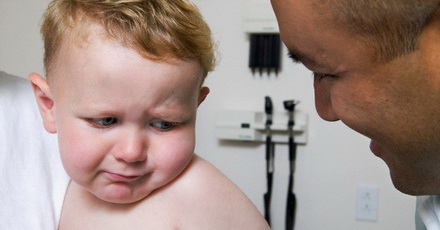

Specific Phobias

Brief description:
Instead of worrying about multiple things, phobias refer to a very strong fear of a particular thing (e.g. dogs, doctors, shots). Some kids can have multiple phobias. The child fears the situation, and also either avoids the situation or experiences severe distress about the situation. Children might have a fear of bees and get so upset that they cannot play in their backyard (avoidance) or run into their house crying whenever they think they hear a bee, and can't swim go to summer camp because of this fear. Severe fears of weather (thunderstorms), costumed characters, small animals or insects, water, or the dark, are other common childhood phobias.
Though phobias are more contained, they can undermine a child's confidence greatly. When everyday activities such as picnics, even outdoor gym class are avoided because of a fear of bees, kids feel embarrassed that they are terrified in commonplace situations that other children don't even give a second thought.
Red flags:
-
Excessive, persistent fear of a specific situation or object
-
Exposure to the situation evokes immediate, extreme distress about feared situation or object which can be expressed by clinging or freezing in young children.
-
Avoidance of feared situation or object, refusal to participate in activities where may encounter feared situation, endures situation with great distress
Treatment focus:
The treatment for phobias entails a combination of changing cognitions (correcting misperceptions: Dogs want to hurt me, I'll die from a bee sting) and gradual exposure to the feared object. Children use accurate, alternative thoughts that are focused on coping (e.g. I am scared but I can handle being next to a bee; I know that if I stand still, it won't bother me). It can be very helpful for a child to observe someone else who is somewhat anxious manage the same situation the child is afraid of. In vivo exposures (for bee phobia) can start with reading a book about bees, next watching a movie about bees, and moving up until child can be around a bee.
Brought to you by The Children's and Adult Center for OCD and Anxiety.





















